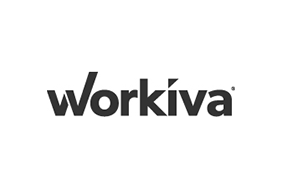Values Driving Value: Reaping the Business Benefits of ESG
Published 03-01-23
Submitted by Workiva

Originally published on Workiva
By Mandi McReynolds, Head of Global ESG
A recent Workiva survey has revealed that a majority of senior decision makers surveyed have noted a positive correlation between their ESG practices and tangible business value.
While the idea of building corporate value through ESG isn’t new, the path to success in this area isn’t always clear.
During a panel discussion organised by the Financial Times in partnership with Workiva titled ‘The Future of ESG and Sustainability Reporting’, I argued that “it all comes down to values translating to value.” But how does this work in practice?
Where ESG and value creation come together
When considering the link between ESG and value creation, the incentives and pressures brought in by governments and external stakeholders may be the first things to come to mind.
As expectations and regulations rise, the immediate benefits of keeping up soon become apparent—both in the form of ‘carrots’ like ESG-linked executive compensation schemes, and ‘sticks’ such as potential penalties from regulators or limited access to capital financial institutions or customers..
Although these considerations are crucial, focusing exclusively on external, shorter-term motivators and detractors fails to dive deeper into the true purpose and complexity of ESG, thereby limiting the potential for greater growth and value creation over a much longer period of time. The relationship between ESG and financial success is multi-layered, requiring a more holistic view in order to be fully harnessed.
If done correctly, ESG strategies can help companies increase their value in a number of key areas, including:
- Top-line growth
- Lower costs
- Alignment with governmental initiatives
- Talent retention
- Return on company investments
- Stronger risk management practices
While these are all potential areas for value creation through sound ESG practices, not each of these will be equally important for every company. To stand out, business leaders need to determine specific areas of focus that make sense for their company.
‘Values’: a question of materiality
This brings us to the idea of ‘values’.
It’s worth unpacking what is meant in this context. In a politically and socially divided world, the term—which carries with it implications of a shared moral code—can feel loaded.
To some extent, it’s undeniable that ESG initiatives on a global scale follow a particular ethical framework (regarding, for instance, human rights or environmental sustainability). But while companies are obliged to follow certain standards in how they operate and report, they are not being asked to single-handedly address and solve all of the world’s problems—a common misinterpretation of ESG that can lead to disjointed initiatives, a ‘scattergun’ approach of trying to address everything at once, or even accusations of greenwashing.
The purpose of ESG is to enable company stakeholders to make sound, informed decisions that take into account the wider environmental and social context within which the company is operating. The idea of ‘values’ in this context therefore relates more closely to a shared company mission and questions of materiality.
Of course, being seen to make a positive impact on the world is becoming a highly material question for many organisations. Consumers, stakeholders and governments are expecting more from corporations, and these expectations need to be taken into account. However, standalone ‘feel good’ initiatives which are divorced from the bread and butter of the organisation are more likely to be ineffective, or even do real damage, than to provide tangible benefits.
To build real value for the business, the focus of an ESG strategy needs to be closely tied to the company’s daily activities, taking into account its particular circumstances alongside its existing strengths and resources. While a multinational food distributor, for instance, may wish to leverage new technologies for tracking the journey and carbon footprint of individual items of food, a consultancy might choose to focus their efforts on adopting innovative solutions for measuring the happiness and wellbeing of their staff.
Determine your purpose, then tell your story
The final—and perhaps most crucial—piece of the puzzle is the ability to communicate the information in a transparent, consistent and reliable manner, underpinned by verified and verifiable data.
While the CSRD comes into play in Europe, the SEC begins to introduce new disclosure requirements and mandatory ESG reporting looms on the horizon throughout the world, this level of rigour and transparency will soon become a baseline requirement. Having ready access to reliable data is essential, but organisations also need to understand why they’re in the data and what story they’re telling. By having established a purpose and area of focus underpinned by shared organisational values, leaders will be able to tell a compelling ESG story that has clear meaning and direction in a way that both showcases and increases the value of the organisation.
Looking for more ESG insights? Check out The ESG Leader's Playbook and subscribe to the ESG Talk podcast on Apple, Spotify, Google, or YouTube.

Workiva
Workiva
Workiva Inc. (NYSE:WK) is on a mission to power transparent reporting for a better world. We build and deliver the world’s leading regulatory, financial and ESG reporting solutions to meet stakeholder demands for action, transparency, and disclosure of financial and non-financial data. Our cloud-based platform simplifies the most complex reporting and disclosure challenges by streamlining processes, connecting data and teams, and ensuring consistency. Learn more at workiva.com.
More from Workiva

